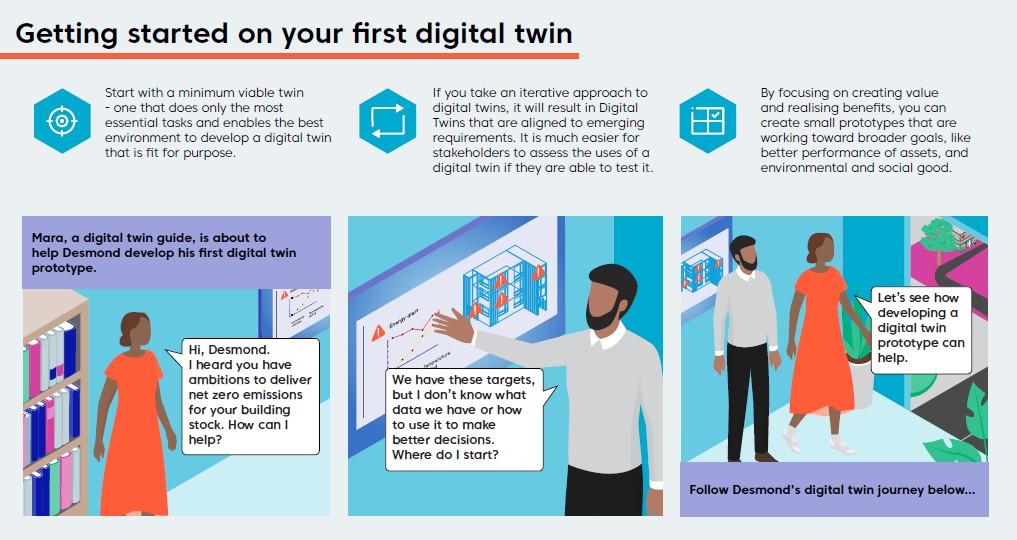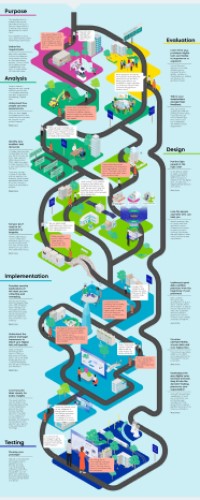
Submitted by Anonymous on Tue, 29/03/2022 - 12:08
The Digital Twin Journeys workstream has taken world leading research and turned it into accessible and useful information to enable those who are just starting out on their digital twin journeys to get ahead. We have learnt about more than just innovative technologies and their implementation, we have learnt about the type of thinking that makes this research ground-breaking. To take this research forwards and discover what your Minimum Viable Twin is, check out the infographic, the final summary of our workstream.
Join Desmond and Mara as they embark on a journey of their own to develop a digital twin. As you follow them, you will learn about an approach to design thinking and iterative development that paves the way for effective digital twin prototyping.
Read the full infographic here.
We have taken our journey through assessing the need of users as they utilise our services. This enables the interventions that we make to be tailored to their needs, considering the ecosystem of services they rely on and the differing levels of access to these services.
We have learnt that care needs to be taken when selecting whether to create your own solution from scratch, buy something pre-existing or work with partners. The Deep Dish project used well established code to handle computer vision, the sensors used in the Staffordshire bridges projects were not custom made for it. In short, there is no need to reinvent the wheel.
As digital twins were themselves first conceived by NASA as a way of managing assets in the most inaccessible place, space, so too have we learnt how we can manage inaccessible assets from space with the help of satellite telemetry. But we also discovered how important skilled data scientists are to making this technique accessible to industry.
We learned that digital twin prototypes can be used as a tool for their own continuous cycle of improvement, as each iteration teaches us how to better classify, refine and optimise the data we use in our decision-making.
The key to it all is the decisions that we make, the way that we change the world around us based upon the information that we have in front of us. We have learnt that working with decision makers is central to creating digital twins that improve outcomes for people and nature as part of a complex system of systems. We can provide these stakeholders with the information that they need to realise our collective vision for a digital built Britain.
This research forms part of the Centre for Digital Built Britain’s (CDBB) work at the University of Cambridge. It was enabled by the Construction Innovation Hub, of which CDBB is a core partner, and funded by UK Research and Innovation (UKRI) through the Industrial Strategy Challenge Fund (ISCF).
To join the conversation with others who are on their own digital twin journeys, join the Digital Twin Hub.

